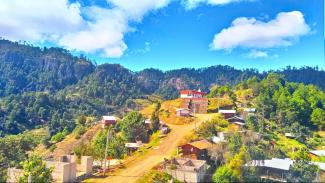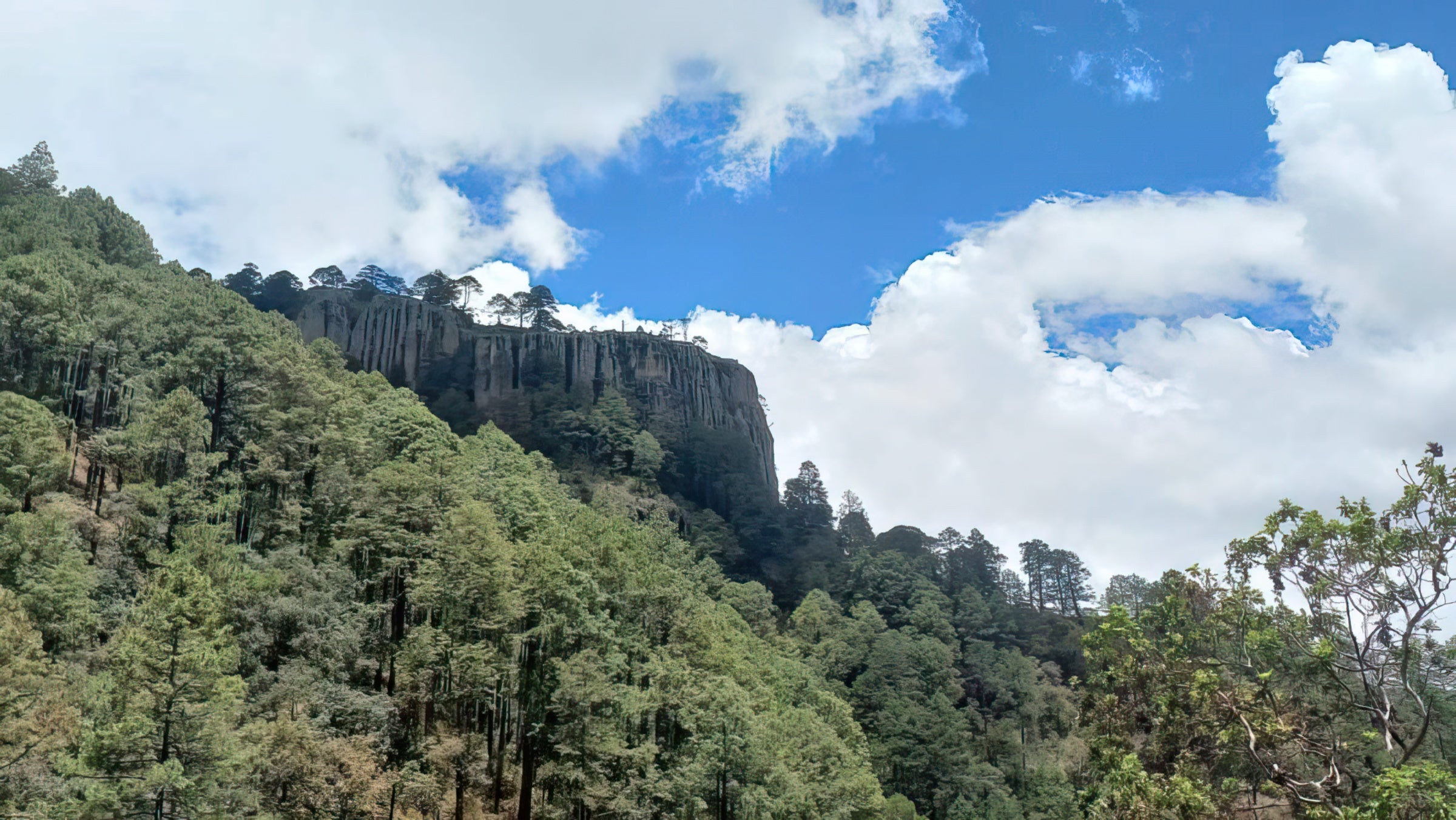
In Kava Jee Kua’a (Guerrero Grande), a community located in the high mountains of the Mixteca in Oaxaca, Mexico, we can see the stars with astonishing clarity. But the night they came in to burn our houses, we did not see stars—just flashes of fire and strange sounds we had never heard before. We know exactly when it started, because grandmothers always tell us those things, especially when the rain and cold come together. But we never imagined that we would have to see how people, who, years ago, sat with us at the same table to eat, would cloud their hearts. What we experienced in those days of October 2021 was the result of a dispute over land and resources.
The dispute was between residents of the communities of Kava Jee Kua’a, Mier y Terán, and Ndoyonuyiji and the authorities of San Esteban Atatlahuca. A timeline of this conflict can be found in the Precautionary Measures (No. 1050-21) issued by the Inter-American Commission on Human Rights. There, two versions of the truth are presented, although the truth is always a great absence in times of war. These precautionary measures were the result of an armed attack perpetrated on the communities of Kava Jee Kua’a, Mier y Terán, and Ndoyonuyuji.
The main reason for the armed attack was a result of a claim initiated by the three communities that an agreement with San Esteban Atatlahuca, signed in 1949 and ratified in 1972, be recognized. Our lands are hectares of forest, lands full of vegetation; the lungs of the Mixtec Peoples. They are a place of fresh and icy air and of giant pines, of mushrooms and flowers. This struggle is an internal problem that stems from an agrarian conflict between the communities and the municipality. The communities only asked for the agreement to be respected and for the protection of their forest, since this land has a large amount of trees and is being profited from—profits that have not been shared, then or now. The first clashes began in 2019. At that time the three communities were united in asking that the logging of trees by the municipal government be stopped.
The State, municipal governments, and the communities held various roundtables to avoid confrontation, but none of the agreements that were reached were honored. On the contrary, divisive tactics were put into action. First they divided the Ndoyonuyuji community, and then Kava Jee Kua’a, by giving money to a few and sowing hatred and division among the people to undermine their relationships. These tactics sought to make the communities give up their legitimate claims, but quite the opposite happened. The conflict was unique in the use of fake profiles on Facebook to divide people in the communities, and although what was published was false, people believed the disinformation.
The most notorious profile used the name Chucky (in reference to the doll from “Child’s Play”), and in essence that was his role—dedicated in anonymity to inventing stories that deeply hurt and undermined the social fabric of our communities, breaking the thin thread that sustains and separates the rational from the irrational. These cases show how social media can be misused to spread false information, hate, and violence instead of informing and connecting the population. From 2019 to October 2021 there were injuries and imprisonment, but what happened in October 2021 to Kava Jee Kua’a, Mier y Terán, and Ndoyonuyuji will not be forgotten for generations. The fallout in this conflict was severe, and almost all of us lost something in those days.
We lost those who should not have died. Children should not have had to run for their lives. Women should not have had to silence their children for fear of being discovered from their cries. The confrontation of those days left serious scars on the community. There were murders, disappearances, burning of houses and vehicles, attacks on the town council, churches, and schools, and the internal displacement of more than 300 people. Anyone who arrives in Kava Jee Kua’a can see the remnants from the ravages of those days: the bullet marks on the walls, the ashes and brown sheets left by the fire, the two burned trucks that are still there as a symbol of what should never have happened. But the violence also left behind things that almost no one noticed. Children in the community stopped going to school, left without books and without hope, robbed of their development and education. The attack was so brutal that the Inter-American Commission on Human Rights granted precautionary measures in favor of these communities and the five disappeared persons.
From then on, the State police, the army, and the national guard have maintained a presence. But the threats have not stopped—especially on social media, which from time to time is used to attack people in the community. The Oaxaca State Attorney General’s Office reported that it has opened investigations into four of the disappearances and gave assurance that it is also investigating one as a death. In July 2022, we learned that the State Investigation Agency arrested Rogelio Bautista Barrios and Carlos Reaño Sandoval, authorities in San Esteban Atatlahuca at the time. We later found out that they had been released, and since then there have been no advances in the pursuit of justice.

Kava Jee Kua'a is emblematic for its rich biodiversity.
Federal money that was officially allocated for the communities as compensation has been held by the municipality since 2019 and has not yet reached the people. It is important to highlight that the increasing deforestation and felling of trees in the Mixteca region has had a significant impact on Kava Jee Kua’a and other nearby communities. Natural resources are essential for the survival of these communities and it is essential to protect them. The dispute over land and resources in Kava Jee Kua’a is an example of how the exploitation of natural resources can trigger situations of conflict and tension that affect entire communities. Almost two years after that armed confrontation in October 2021, Kava Jee Kua’a remains united in strength despite the blockades that continue to exist in the community.
Their demands remain the same, that the agreement between San Esteban Atatlahuca and the three communities, signed in 1949 and ratified in 1972, be recognized, and that the damage be repaired, although there are damages that can never be repaired. This year, a woman has been placed in charge as municipal agent, something not seen before in the community. Children are returning to school, and we all ask that Kava Jee Kua’a once again be a safe place, the place of peace, the place where the stars look beautiful. “From scratch but let’s move forward,” says the slogan on her Facebook page. No one can deny that the defense of the environment is crucial for the survival of communities and the protection of natural resources.
It is essential to reflect on the importance of protecting natural resources in this region and the need to work together to build a fair and equitable future for all. As I write this, I think of the children who have had to experience this conflict, and paraphrasing the late Mexican poet José Emilio Pacheco, I say,
“How to ask them not to inherit the hatred, how to tell them that after what has just happened, the Guerrero Grande of tomorrow, the Guerrero where they will be men must be the place that always was, a place of peace, a place without crime and without infamy.”
Perhaps it takes us nights and days to consider and reconsider what we yearn for, something we do in a place like the Mixteca, where dying for land seems to be a destiny.
--Gildardo Bautista Hernández (Mixtec) was born in Kava Jee Kua’a (Guerrero Grande), Oaxaca, and is a professor at the Intercultural University of the State of Puebla.
Top photo: Guerrero Grande before the attacks.
All photos by Gildardo Bautista Hernández.
